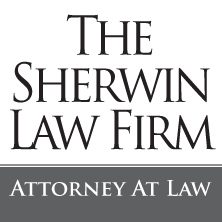What is a Loan Modification?
I write often about loan modifications, but I’ve had many clients ask me what is a loan modification, and how does it compare to a loan refinance. It is an important topic, as loan modifications are essential for foreclosure defense.
A loan modification is a restructuring of a mortgage loan. The purpose is to make the monthly payments of the loan more affordable for the homeowners (the federal HAMP program aims to get the payment down to 31% of the homeowner’s monthly income). Loan modifications attempt to do this through a variety of four different steps:
- Capitalization
- Interest Rate Reduction
- Term Extension
- Principle Forebearance
- Principle Reduction
Capitalization is where the lender adds the unpaid arrearage of the loan to the mortgage debt. Through capitalization, the lender adds these unpaid expenses to the principle of the loan, which the borrower will repay as the part of the entire loan.
An interest rate reduction is where the lender decreases the loan’s interest rate, making the monthly loan payments more affordable. HAMP permits a loan’s interest rate to be reduced to a minimum of 2%. Non-HAMP loan modifications generally use the market interest rate (presently between 3% – 4%).
A term extension is an increase of the length of the loan. HAMP permits loans to be extended up to forty years. As the length of the loan increases, the monthly payments in turn decrease.
A principle forbearance is where a lender agrees to take a large chunk of a loan and put it at the end of the term. A borrower is not required to pay interest on this amount of money, and it only becomes due once the loan term ends or the home is sold. The purpose of a principle forebearance is to make the loan more affordable: while the borrower still owes this money, he or she will not pay interest on this portion of the loan. However, this money ia still owed to a lender. In contrast, under principle forgiveness, the lender agrees to forgive a portion of the loan. Understanding the difference between these two terms is critical in understanding what is a loan modification, as these two options come up often with modifications. HAMP, for example, only allows for principle forbearances, without forgiving any portion of the loan. Non-HAMP modifications, sometimes referred to as “in-house modifications” may be more open to debt forgiveness.
I hope this overview is helpful in understanding what is a loan modification. If you find yourself having difficult obtaining a loan modification, contact me for a consultation. As I always tell my clients, a lawyer is not a financial adviser. Homeowners in need of loss mitigation assistance should always speak with a financial and tax adviser for advice on the advantages and consequences of accepting any sort of loan modification.

